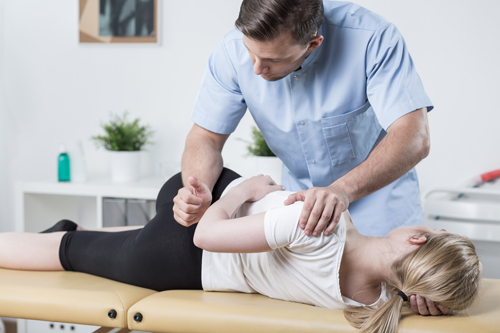
Both male and female competitive athletes often develop an unexplained pain in the groin. This pain occurs most often when the athlete pivots or twists and can be intense enough to end a career. Recent research suggests that this groin pain may actually arise from damage to the hip joint. The hip is a ball and socket joint. The ball, or head of the femur, fits into a socket called the acetabulum. Both ball and socket are lined with cartilage so that the joint can move smoothly. Any abnormality in the shape of the femur or the acetabulum can wear away the cartilage, creating a painful condition in the hip called femoroacetabular impingement (FAI).
There are two types of FAI.
- Cam impingement occurs if the head of the femur is not completely round. As the joint moves, irregularities in the femur head bite into the labrum or lining of the acetabulum, wearing it away.
- Pincer impingement occurs if the front edge of the acetabulum extends too far. When the hip moves, the labrum is crushed against the neck of the femur.
FAI can be difficult to diagnose because other muscles and joints attempt to compensate for damage to the hip joint. As a result, pain may appear to come from the lower back, groin or gluteal muscles. People are born with the bone abnormalities that cause FAI. Nonathletes usually will not develop impingement symptoms until middle age or older. But athletes who perform repeated movements and put high loads on the hip can develop pain from FAI in their teens and 20s. Surgery is the most frequent treatment for FAI, and it is usually successful. Some studies have shown that more than 75% of competitive athletes who have arthroscopic surgery for FAI are able to return to their sport. Following surgery, physical therapy is essential to prevent scar tissue formation, restore range of motion and develop strength in the hip. When you plan surgery for FAI, our experienced physical therapists can work with your surgeon to develop a rehabilitation program aimed at getting you back to athletic competition.










